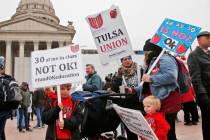Today’s housing market can be a real ‘fixer-upper’ for current buyers
The real estate industry suffered such a freefall in 2007 that even the most hopeful 2008 scenario was for the market to hit bottom by summer, or by autumn, or by Christmas. That turned out to be overly optimistic.
Four months into 2008, the bad news keeps rolling in, and most analysts agree the bottom everyone kept predicting remains elusive at best, and years away at worst.
"I think we are a ways from the bottom -- and a long way from any indicators that would even hint at an upturn," says Mike Simonsen, chief executive officer of Altos Research, a real estate data firm based in Mountain View, Calif.
"It's a gigantic mess," agrees Lewis Goodkin, president of Miami-based real estate analysis firm Goodkin Consulting.
There's no simple answer to how the housing market got into that mess, and figuring how it will come out of it is an even more torturous undertaking.
What went wrong
"Just about every measurement declined in 2007. It was a bad year. Nobody can put a good light on this," says Lawrence Yun, chief economist for the National Association of Realtors.
The trouble began in 2006 and continued into 2007 as wave after wave of adjustable-rate mortgages reset at dramatically higher interest rates, says Chris Porter, manager with John Burns Real Estate Consulting in Irvine, Calif.
In 2002 and 2003, buyers flocked to these ARMs, which offered a rock-bottom interest rate for the first five years or so before resetting to a higher variable interest rate. The record-low introductory rates allowed people to buy bigger homes than they might otherwise have afforded.
As resets came at higher rates, those mortgages carried larger monthly payments -- higher than many could bear. Facing foreclosure, many chose to sell, and as listings flooded the market, prices began to slip. That sparked another round of selling -- this time among investors who had switched from stocks to real estate with hopes of financial salvation through flipping.
More problems began to surface.
"You had people who wouldn't have been able to qualify for a mortgage with normal underwriting rules using these introductory rates to buy more house than they could afford. You had builders selling to people who they would not have sold to under normal underwriting rules, which made their profits go up and then they plowed more money into creating more supply. You had speculators looking at housing as if it were a security, and the lenders having this attitude that they weren't going to have to deal with this because appreciation would allow people to refinance their mortgages, and the appreciation would protect everyone," Goodkin says. "But it was all B.S."
As more houses went up for sale, prices continued to come down.
"That downturn followed what we knew then, and what we know now, was a totally unsustainable boom period that started in 2002 and ran through 2005," says Dave Seiders, chief economist for the National Association of Home Builders.
When people got to the point that their selling price couldn't cover their mortgage, the first wave of foreclosures hit. The market began to crumble and housing went from leading the nation's economy to dragging it down.
"This was the first time we had this number of foreclosures that weren't connected with a major crisis of the economy," Goodkin says. "This was a housing upturn that started when the economy wasn't rip-roaring, and that ended before the economy went into recession. This was an economic crisis caused by housing, rather than the other way around."
Predictions were off
Even as the housing market disintegrated, major housing analysts across the country spent much of the early months in 2007 predicting better days were in sight, a prediction Simonsen says seemed reasonable at the time.
"At the end of 2006 we actually observed some good strength in the economy. The stock market was up, the economy felt strong. Everyone expected housing would follow," he says.
"Even though there was some risk, the ratings agencies fooled the market and the investors into thinking housing was rock-solid," Yun says.
As these so-called subprime loans began to default, deeper fissures in the housing market began appearing.
"That took most of us, and me for sure, by surprise," Yun says. "It was the speed and the scope of the losses that nobody expected. We all saw something coming, but it was bigger and worse than we expected."
With each increasingly bad economic report, it became more and more obvious that a bottom was not coming any time soon.
"We knew it would be a rough year," Porter says. "But while I think that there was this idea that we were going to see the bottom toward the end of the year, the subprime situation really prolonged everything and pushed the recovery into the future."
Following a record wave of foreclosures, few lenders are in a hurry to return to loose underwriting standards, and many are reacting by adopting tighter-than-normal lending standards.
"The lenders got their teeth knocked in, and now they are ultraconservative," Goodkin says. "That compounds the problem because now there are more foreclosures and people can't sell if they are in financial problems, and you see people walk away from homes, which is a bad situation all around."
2008 outlook
Most statistical indicators show 2008 won't likely be much better.
"I am not really excited about the outlook. Not until late '08 or '09 at the earliest," Goodkin says. "And even then, when the real estate market does come back, it won't be where it left off. We will probably be looking at a landscape that is 30 percent or more below its peak of '05."
Simonsen agrees that a bottom to the market isn't on the immediate horizon.
"My gut says no. I don't see any catalysts for a reversal in the market," he says. "Interest rates can't go lower. Credit markets won't open up in any big way. We are looking at a questionable economy rather than looking at coming out of an economic slump."









